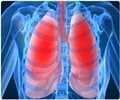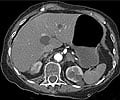“When the goal is in sight, all your physical pain disappears, and your mental determination shall carry you the rest of the way” - Trey Patty
Life is short they say and it can only get shorter with tobacco smoke! This treatise intends to clear the air for all those who need to ‘light up’ to live life, underlining the irony that - smoking can only take those breaths away!Smokers envy non-smokers pride! This is amply proved as every one in two smokers wants to quit. With the repercussions of tobacco smoke looming large, and the promise of a healthy future sans tobacco, it is no surprise that there are teeming numbers who wish to quit the potentially lethal vice.
Yet, why do many dither before taking that significant step?
Determination and will power are paramount as are the power of time-tested treatment measures to quit smoking. Success stories are few and far between of instances where will power alone, popularly called ‘cold turkey’ has helped banish the addiction. Yet, the power of the mind ensures half the battle is won.
Let’s look at some of the compelling reasons why one should give up smoking as well as look at strategies to quit the habit.
Lethal Vice
The chemicals found in tobacco lower the body’s immunity to fight infections. Further, tobacco gradually begins to harm the vital organs in the body, especially the heart and the lungs. Smoking accounts for 90% of lung cancer cases. A smoker carries a fourteen fold risk of dying due to cancer and a double risk of dying due to a heart attack.
Break Free from Tobacco Smoke
Once the mind is made up to kick the habit, therapy involves a combination of Nicotine Replacement Therapy (NRT) and Behavioral Counseling. In some cases, physicians prescribe medicines which do not contain Nicotine. These pills are prescribed to cope with withdrawal symptoms. Counseling helps cope with cravings, instills positive behaviors while enhancing the qualities needed to solve problems.
The first step begins with understanding the triggers behind smoking. Many smokers are tempted to smoke in certain places, during certain times or when they simply see specific objects. It also helps to know that TRIGGERS ARE ALWAYS FLEETING. If one doesn’t buckle in, they invariably fade away.
Understanding temptations equips the potential ‘quitter’ with possible hurdles in the journey, to enable plan ahead for the ensuing challenges. Support from family and friends are vital to keep the morale high. Smokers also benefit by joining rehabilitation centers and support groups to help meet their objective.
Calling ‘Quits’ – What to Expect
Life is not a bed of roses. The initial three months of the smoking cessation program is by far the most daunting. A smoker off cigarettes may feel overwhelmed and out of control with emotions. It is normal to feel low, anxious, agitated, and confused. Some of them have great trouble falling asleep.
Labeled as ‘withdrawal symptoms’, it makes the victim feel out of place and uncomfortable. Withdrawal symptoms are most powerful in the first week following the cessation of tobacco, considered as the most vulnerable phase. Withdrawal symptoms last only a few weeks, therefore tenacity is a rewarding trait.
Saving Grace - Nicotine Replacement Therapy
Nicotine replacement therapy (NRT) is a methodical treatment program devised to reduce the impact of withdrawal symptoms by allowing the brain to get small does of nicotine. NRT is available in different forms with variable potency- patch, nasal spray, inhalator, lozenge, tablet and gum.
It is important to choose the right type of NRT and vary its dosage according to the type of smoker (Light or heavy). Further, NRT and tobacco should never be mixed to realize the full effect of Nicotine Replacement Therapy.
Nicotine Patch. The nicotine patch, which is fitted below the attire, ensures the body gets consistent doses of nicotine via the skin. Patches come in different strengths, and is designed to reach its optimum performance in four to six hours following its contact with the skin.
Micro Tab
This is a tiny tablet placed beneath the tongue. As the tablet dissolves, it releases nicotine which is absorbed through the mouth lining. The tablet is not to be swallowed or chewed.
Lozenge
Lozenges are available in dual potency - 2mg and 4 mg. It is allowed to dissolve in the mouth like the Micro tab. The higher dosage is recommended for heavy smokers.
Nicotine Gum: The NRT gum is chewed slowly, allowing it to be stuck in the inner walls of the cheek. This allows the absorption of nicotine into the inner lining of the mouth.
Nasal Spray
The nasal spray is by far considered the most powerful type of NRT, as nicotine released can be absorbed sooner than other NRT variants. This is most suitable for heavy smokers whose craving cannot be satiated with patches and gums.
The nasal spray encompasses a tiny bottle of measured nicotine solution that is pumped into the nose.
Inhalator: The inhalator consists of a plastic body containing a replaceable nicotine cartridge that can fit into the mouth. When the inhalator is sucked in, it releases low doses of nicotine, absorbed through the mouth lining.
Training the Mind - Psychotherapy
The two tier approach of drug therapy in combination with cognitive and behavioral therapy is known to triple the chances of success. While drug therapy helps the body cope with the addiction, cognitive and behavioral therapy delves into the connection between thoughts, their pattern and its influences on behavior, in a bid to alter them positively.
Cognitive Therapy
Cognitive therapy helps the individual comprehend the basic premise behind the habit, by probing into the nature of one’s thoughts and beliefs. Most victims felt drawn to smoking due to a pre-conceived belief. Cognitive therapy assists the victim replace those negative beliefs with positive ones, with a motive to influence healthy behaviors.
Behavioral Therapy
Behavioral therapy helps the individual recognize the triggers for smoking in the environment, seeking to replace those triggers with healthy alternatives, in a bid to reinforce positive behaviors. For instance, a smoker who wants to quit is counseled to replace the ‘urge’ to smoke with a healthy alternative, such as cycling, cooking or even stepping out.
By constantly and intentionally replacing the negative behavior of smoking with a positive behavior, the smoker is in effect ‘taught’ to re-engineer the trigger-action-behavior chain in the brain. Eventually, behavioral therapy assists the smoker habituate to a positive behavior, while giving up the negative one.
Cope with Cravings
Cravings last an earth shattering 3-4 minutes. Yet, one can fight it effectively with the following steps:
• Keep those ‘reminders’ away –cigarettes, ashtrays, lighters and anything that diverts focus from the end goal.
• Snack on salads or non sugary items to resist the craving
• Engage in an outdoor activity to divert the mind
• Engage in activities that keep the hands busy – painting, washing dishes etc
• Deep breathing exercises help calm the mind.
Fighting Fit and Tobacco Free
The benefit of joining a support group or a rehabilitation program is far reaching as it helps smokers deal with inevitable withdrawal symptoms to reinforce positive behaviors. Further, the camaraderie from interactions in support programs as well as inputs from others in the same boat enhances problem solving skills leaving people motivated to achieve the end goal. It also ensures people do not relapse into their old ways.
Fitness activities like aerobic exercises, bike riding, tennis, or jogging, or any satisfying sport keeps the mind stress free, focused and positive while keeping the body healthy and fit.
Undoubtedly, giving up smoking has a manifold effect – of mitigating the risks to ones health and of others in the environment. In a nutshell, life can turn completely rewarding for all those who give-up the habit.
Source-Medindia
SAVITHA/L











